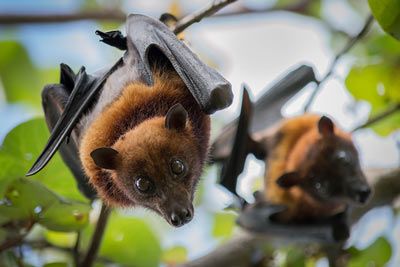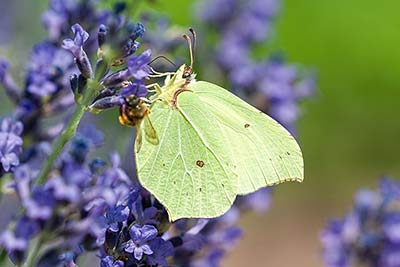Mole
Mole Facts
| Size | 5-6 in (12-16 cm) |
| Speed | Up to 2.4 mph (4 km/h) |
| Weight | 2.4 to 4.5 oz (70-130 g) |
| Lifespan | 3-6 years |
| Food | Earthworms, insects, larvae |
| Predators | Cats, owls, foxes |
| Habitat | Central and Eastern Europe |
| Order | Eulipotyphla |
| Family | Talpidae |
| Scientific name | Talpidae |
| Characteristics | Cylindrical body, large front paws resembling “shovels” |
Main Characteristics
Moles are small mammals that use their shovel hands to dig tunnels and push the "debris" to the surface - creating the famous molehills. By the way, there are about 450 species of insectivores, especially shrews (over 350 species) and hedgehogs (24 species).
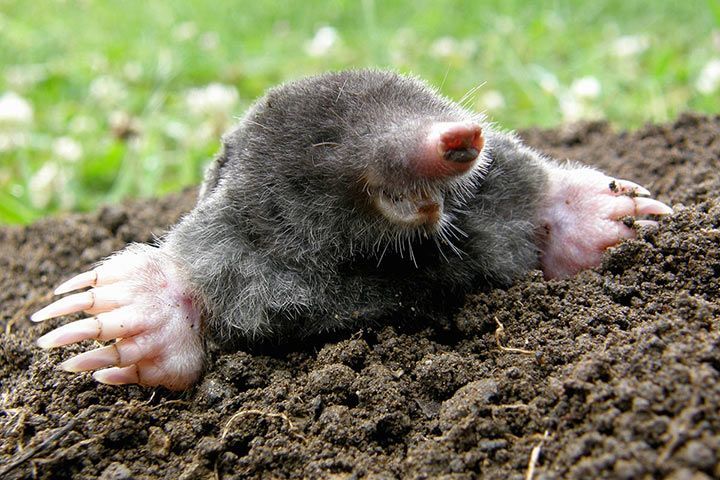
Anatomy and Appearance
They have cylindrical bodies, shovel-like hands, velvety dark gray fur, and small eyes. Moles are insectivores.
Size and Weight
Moles have a body length of about 5-6 inches (12-16 cm). The tail is 1 to 1.5 inches (2.5 to 4 cm) long. They weigh 2.4 to 4.5 oz (70-130 g). The males are slightly larger than the females.
Fur
Other than the furs and hairs of most animals, the hairs of the mole do not grow in a specific direction. They can freely move in any direction, which enables the mole to scoot through its tunnels at breakneck speed.
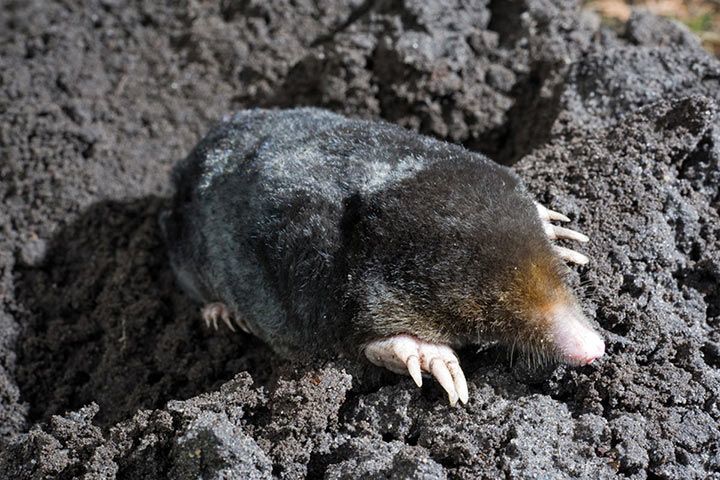
Lifestyle
Moles Are Loners
The mole is not very sociable and normally attacks other moles – except during the mating season if the other mole is a lady. Yet, their dates are anything but romantic. They only spend a few hours together and then part ways again.
Life Underground
Even in the countryside you hardly ever get to see a mole. Most of the time it lives underground and the only proof of the new “inhabitant” of your garden are the molehills appearing out of nowhere. The owners are usually not happy about this, as those hills can coincidentally always be found in the nicest, most carefully maintained lawns. The mole lives and works in shifts: It digs, hunts and eats for about four hours. Then it sleeps for four hours.
The Tunnel System – Or the „Worm Trap“
The mole digs complex tunnel systems up to 656 feet (200 meters) long and up to 27.5 inch (70 cm) below ground level. In addition to a "sleeping room" it also builds a nesting room and a larder. Yet, most tunnels are nothing but "worm traps". Without food a mole can only survive for about 24 hours. If it has some earthworms left after a meal, it stores them as live food in a special store room.
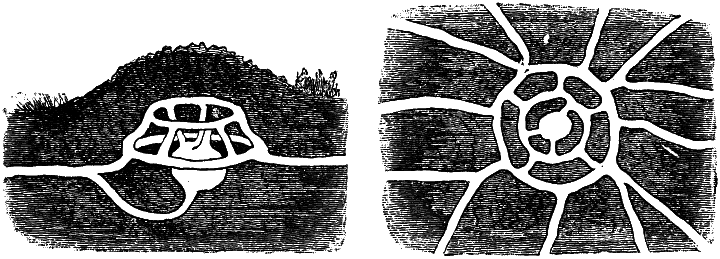
Senses and Abilities
How Do Moles See?
The mole has very bad eyesight. Its little button eyes only perceive differences between light and dark. This is ok for the mole as it lives underground anyway.
Do Moles Have a Good Sense of Hearing?
Moles cannot hear very well and thus use their hairs to „listen“. The hairs perceive the slightest vibration, tremor, movement and even changes of the air pressure and transmit this information to the brain of the little digger. So the mole can be always quickly on-site when an earthworm “noisily” (for the mole) falls into one of its tunnels.
Do Moles Have a Good Sense of Smell and Touch?
A mole's sense of smell is excellent. It uses its fine nose to smell prey. In fact, it can even smell in "stereo", using the nostrils independently to create a more precise "picture" of its surroundings. Its sense of touch is exceptional, too. In its small "trunk" there is a sense organ that detects insects that move underground.
Movement
Speed
With brisk pace of 2.4 mph (4 km/h), the little insectivore is as fast as a human walking along the street.
Agility
It somersaults underground if it wants to turn around and continue in the opposite direction.
Behavior
In Winter
The mole does not hibernate. Its tunnels are so deep that they always remain frost-free, despite the cold in winter. Before it gets cold, it stocks up. It stores up to 790 earthworms in his pantry. Together they weigh up to 3 pounds (1.5 kg).
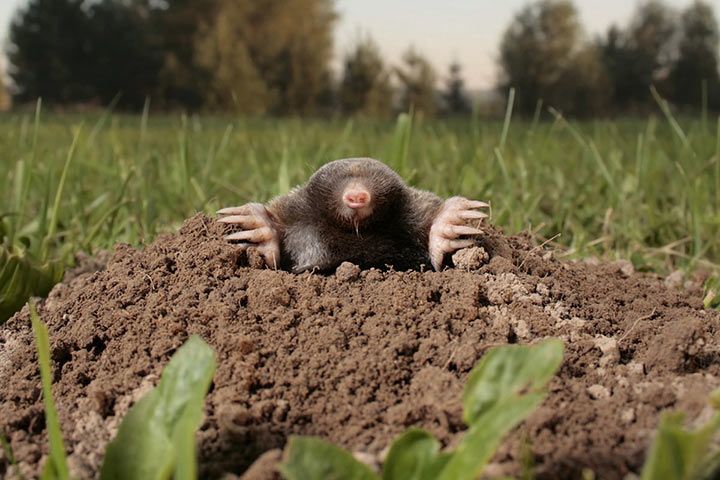
Lifespan
In general they live for about 2.5 years and hardly ever get older than 5 years.
Enemies and Threats
Natural Enemies
The mole has enemies both on the ground and underground. In the open, attacking owls, buzzards and raven can be fatal. Floods and ground frost can also claim the mole’s life.
Human Impact
As soon as they have settled in your garden, this mostly means "war". The roots of young crops get severely damaged. There are many tricks and magic cures to chase away moles. They include egg shells, moth balls and hollies, which are placed inside the molehills. Yet, this only blocks an exit for the mole, so that it just builds another one nearby. The effect is that you will get even more molehills than before. In order to cope with moles, people also use chemicals, but fortunately most of them are forbidden.
Protected Species
Moles are a protected species in Germany. You must not catch them, hurt them or even kill them.
Importance to the Ecosystem
Moles are very important for the ecosystem. They dig up the ground, aerate the soil and fertilize it.
Reproduction
About four weeks after mating, three to five young are born. They are initially naked and blind. Night 22 days open your eyes. After 33 days they leave the nest and after six weeks they are already so mature that they are looking for their own territory.
Fun Facts
Gentleman in Black Velvet
William III, King of England, Scotland and Ireland, fell from his horse when he was going for a ride in London in 1702. His horse had stumbled into a mole’s burrow. The king broke several bones, caught a fever later-on and died. The Jacobites (supporters of King James who had been expelled by William) were not very sad about this as they were prosecuted under King William. The Jacobites therefore called the mole the “gentleman in the black velvet waistcoat”.

















